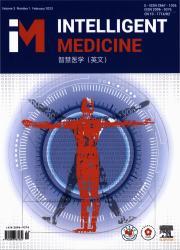Machine learning model for predicting corneal stiffness and identifying keratoconus based on ocular structures
IF 6.9
Q1 COMPUTER SCIENCE, INTERDISCIPLINARY APPLICATIONS
引用次数: 0
Abstract
Background
Corneal stiffness abnormalities play an important role in the onset and progression of keratoconus. However, the limited availability of specialty devices for measuring corneal stiffness restricts their application in clinical practice. This study aimed to develop a machine learning (ML) model that can predict corneal stiffness based on ocular structures and investigate its efficacy in diagnosing keratoconus.
Methods
This retrospective study enrolled healthy individuals and keratoconus patients at the Zhongshan Ophthalmic Center from June 2018 to June 2021. Eleven features, including ocular structural parameters, intraocular pressure (IOP), and age were used to train ML regression models for predicting the stiffness parameter at first applanation (SP-A1) and the Corvis biomechanical index for Chinese populations (cCBI) measured by a Corvis ST device. Mean absolute errors (MAEs) and the area under the receiver operating characteristic curve (AUC) were used to evaluate the performance of the models. The diagnostic efficacy of the predicted SP-A1 and cCBI for keratoconus was evaluated by the AUC, net reclassification index (NRI), and integrated discrimination improvement (IDI).
Results
A total of 1,523 eyes were involved, of which 601 were diagnosed with keratoconus. The MAEs of the SP-A1 prediction were similar in cross-validation (8.95 mmHg/mm) and testing (10.65 mmHg/mm). The R2 value for the SP-A1 prediction exceeded 0.7, indicating that the performance was clinically acceptable. The AUC for the cCBI prediction was 0.935 (95% CI 0.906-0.963). The top three predictors for SP-A1 and cCBI were IOP, keratometry, and central corneal thickness. The addition of the predicted SP-A1 and cCBI significantly improved model performance in diagnosing keratoconus, with NRI of 0.607 (95% CI 0.367-0.812) and 0.188 (95% CI −0.022-0.398), and IDI of 0.028 (95% CI 0.006-0.048) and 0.045 (95% CI 0.018-0.072), respectively.
Conclusion
Our models predicted SP-A1 and cCBI relatively accurately in keratoconus and normal corneas. Moreover, the predicted SP-A1 and cCBI values significantly contributed to the diagnosis of keratoconus. These models could provide a potential alternative for evaluating corneal stiffness and thus facilitate keratoconus screening.
基于眼部结构的预测角膜硬度和圆锥角膜识别的机器学习模型
背景:角膜硬度异常在圆锥角膜的发生和发展中起重要作用。然而,用于测量角膜硬度的专用设备的有限可用性限制了它们在临床实践中的应用。本研究旨在建立一种基于眼部结构预测角膜硬度的机器学习(ML)模型,并探讨其在圆锥角膜诊断中的有效性。方法回顾性研究纳入2018年6月至2021年6月中山眼科中心的健康个体和圆锥角膜患者。使用眼结构参数、眼内压(IOP)和年龄等11个特征训练ML回归模型,预测首次压平时的刚度参数(SP-A1)和中国人群的Corvis生物力学指数(cCBI)。使用平均绝对误差(MAEs)和接收者工作特征曲线下面积(AUC)来评估模型的性能。通过AUC、净重分类指数(NRI)和综合判别改善(IDI)评价SP-A1和cCBI对圆锥角膜的诊断效果。结果共1523只眼受累,其中601只眼诊断为圆锥角膜。SP-A1预测的MAEs在交叉验证(8.95 mmHg/mm)和检验(10.65 mmHg/mm)中相似。SP-A1预测的R2值超过0.7,表明临床可接受。cCBI预测的AUC为0.935 (95% CI 0.906-0.963)。SP-A1和cCBI的前三个预测因子是IOP、角膜测量和角膜中央厚度。预测SP-A1和cCBI的加入显著提高了模型诊断圆锥角膜的性能,NRI分别为0.607 (95% CI 0.367-0.812)和0.188 (95% CI−0.022-0.398),IDI分别为0.028 (95% CI 0.006-0.048)和0.045 (95% CI 0.018-0.072)。结论本模型对圆锥角膜和正常角膜SP-A1和cCBI的预测较为准确。此外,预测SP-A1和cCBI值对圆锥角膜的诊断有重要意义。这些模型可以为评估角膜硬度提供潜在的替代方法,从而促进圆锥角膜筛查。
本文章由计算机程序翻译,如有差异,请以英文原文为准。
求助全文
约1分钟内获得全文
求助全文
来源期刊

Intelligent medicine
Surgery, Radiology and Imaging, Artificial Intelligence, Biomedical Engineering
CiteScore
5.20
自引率
0.00%
发文量
19
 求助内容:
求助内容: 应助结果提醒方式:
应助结果提醒方式:


